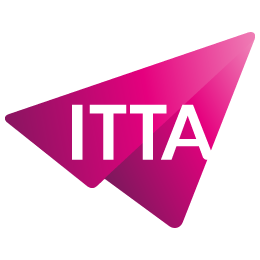Home > Trainings > IT Pro > Cloud Computing > Microsoft Azure Administrator (AZ-104)
Microsoft Azure is Microsoft’s cloud application platform, where it is possible to host applications, data, or services essential to businesses.
This course teaches IT professionals how to manage their Azure subscriptions, secure identities, administer infrastructure, configure virtual networks, connect Azure and on-premises sites, manage network traffic, implement storage solutions, create and scale virtual machines, implement web and containerized applications, back up and share data, and monitor your solution.
This course supports and prepares you as best as possible to pass your AZ-104: Microsoft Azure Administrator exam. This exam certifies your understanding of the various essential concepts and features of this platform.
Module 1 : Manage services with the Azure portal
Module 2 : Introduction to Azure Cloud Shell
Module 3 : Introduction to Bash
Module 4 : Introduction to PowerShell
Module 5 : Deploy Azure infrastructure by using JSON ARM templates
Module 6 : Understand Microsoft Entra ID
Module 7 : Create, configure, and manage identities
Module 8 : Describe the core architectural components of Azure
Module 9 : Azure Policy initiatives
Module 10 : Secure your Azure resources with Azure role-based access control (Azure RBAC)
Module 11 : Allow users to reset their password with Microsoft Entra self-service password reset
Module 12 : Configure virtual networks
Module 13 : Configure network security groups
Module 14 : Host your domain on Azure DNS
Module 15 : Configure Azure Virtual Network peering
Module 16 : Manage and control traffic flow in your Azure deployment with routes
Module 17 : Introduction to Azure Load Balancer
Module 18 : Introduction to Azure Application Gateway
Module 19 : Introduction to Azure Network Watcher
Module 20 : Configure storage accounts
Module 21 : Configure Azure Blob Storage
Module 22 : Configure Azure Storage security
Module 23 : Configure Azure Files
Module 24 : Introduction to Azure virtual machines
Module 25 : Configure virtual machine availability
Module 26 : Configure Azure App Service plans
Module 27 : Configure Azure App Service
Module 28 : Configure Azure Container Instances
Module 29 : Introduction to Azure Backup
Module 30 : Protect your virtual machines by using Azure Backup
Module 31 : Introduction to Azure Monitor
Module 32 : Improve incident response with Azure Monitor alerts
Module 33 : Analyze your Azure infrastructure by using Azure Monitor logs
Becoming a Microsoft Azure Administrator is a strategic choice for IT professionals looking to advance in the cloud industry. This training, validated by the AZ-104 certification, provides key skills in managing Azure services. Here is everything you need to know about this role, the certification, and career opportunities.
An Azure Administrator is a professional responsible for managing, monitoring, and maintaining Microsoft Azure cloud services. This role includes identity management, storage, networking, and cloud resource governance.
An Azure Cloud Administrator is responsible for several tasks, including:
With the rise of cloud solutions, the role of a Microsoft Azure Administrator is highly sought after. Companies are turning to solutions like Azure for flexibility, scalability, and cost savings. Azure Administrators play a crucial role in this digital transformation.
The AZ-104 certification is an essential step for professionals aiming to become a Microsoft Azure Administrator Associate. This training program validates the necessary skills to manage cloud infrastructure on Azure.
Before taking the Microsoft Azure Administrator training and the AZ-104 certification exam, it is recommended to have basic experience in system and network management. Candidates should also be familiar with virtualization and cloud security concepts.
The certification process can take between two and three months, depending on the candidate’s experience. The AZ-104 training includes multiple modules covering all aspects of Azure management.
To become an Azure Administrator, it is advisable to take a Microsoft Azure Administrator course, such as the one preparing for the AZ-104 certification. Here are the steps to follow:
The role of a Microsoft Azure Administrator offers numerous opportunities. With the continuous growth of cloud solutions, Azure Administrators have a wide range of career options in various sectors such as finance, healthcare, and information technology.
In the Azure ecosystem, there are three primary roles:
What is the Salary of a Certified AZ-104 Azure Administrator?
Microsoft Azure-certified professionals earn on average 20-30% more than an IT administrator without cloud certification, depending on experience and country.
Is This Training Suitable If I Am New to Azure?
Yes, but basic knowledge of system administration and networking is recommended. If you are a complete beginner, we suggest an introductory course before tackling AZ-104.
How Long Does It Take to Be Ready for the AZ-104 Exam?
It depends on your initial level and the time dedicated to learning. On average, candidates prepare in 4 to 6 weeks with regular study.
Is Microsoft Azure a Good Choice Compared to AWS?
Azure is particularly favored by companies already using the Microsoft ecosystem. It is often preferred for hybrid solutions and integration with Windows Server, Active Directory, and Office 365.
What Are the Career Opportunities After This Certification?
With AZ-104, you can aim for positions such as:
Is the AZ-104 Certification Recognized Internationally?
Yes, it is recognized worldwide and is a major asset for working with multinational companies or businesses undergoing digital transformation.
Why Take This Training Now?
The cloud market is booming. The sooner you train, the more opportunities you have to advance quickly. Additionally, the demand for Azure professionals far exceeds supply, ensuring excellent job prospects.

Nous utilisons des cookies afin de vous garantir une expérience de navigation fluide, agréable et entièrement sécurisée sur notre site. Ces cookies nous permettent d’analyser et d’améliorer nos services en continu, afin de mieux répondre à vos attentes.
Monday to Friday
8:30 AM to 6:00 PM
Tel. 058 307 73 00
ITTA
Route des jeunes 35
1227 Carouge, Suisse
Monday to Friday, from 8:30 am to 06:00 pm.